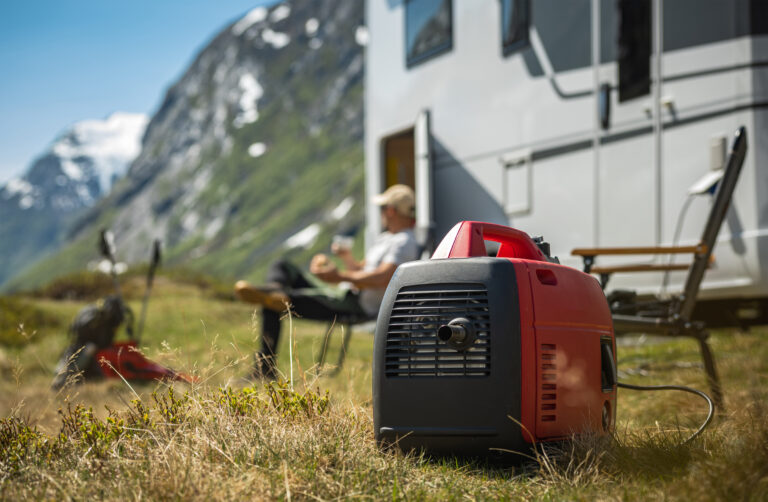As the chilly winds of winter approach, it’s time to shield your beloved RV from the harsh elements. Just like a well-prepared fortress, your recreational vehicle requires meticulous winterizing to endure the cold with resilience. In this step-by-step guide, we will navigate you through the essential measures to safeguard your RV. From draining the water system to insulating windows and doors, our professional advice will ensure your home on wheels remains cozy and protected throughout the frosty season.
Draining the Water System
To properly winterize your RV, it is essential to regularly drain the water system. This crucial step helps prevent frozen pipes and potential damage to your RV’s plumbing system during the cold winter months. Begin by turning off the water supply and opening all faucets, including showers and toilets, to release any remaining water. Next, locate the low point drains, usually located underneath the vehicle, and open them to allow water to fully drain from the system. Don’t forget to also drain the hot water tank by opening the drain valve. Once all the water has been drained, close all faucets and drains securely. It is recommended to use compressed air to blow out any remaining water from the pipes and faucets. By diligently draining the water system, you can ensure that your RV is protected from potential water damage during the winter season.
Protecting Exterior Surfaces
To protect the exterior surfaces of your RV during the winter months, it is important to take necessary precautions and implement proper maintenance techniques. The first step is to thoroughly clean the exterior of your RV, removing any dirt, grime, and debris. This will prevent any potential damage or staining during the winter months. Next, apply a protective wax or sealant to the exterior surfaces to create a barrier against the harsh winter elements. Pay special attention to areas that are prone to damage, such as the roof, windows, and doors. Additionally, consider using RV covers or tarps to further protect your RV from snow, ice, and UV rays. By taking these steps, you can ensure that your RV’s exterior remains in top condition throughout the winter season. Now that we have discussed protecting the exterior surfaces, let’s move on to the next section about insulating and sealing windows and doors.
Insulating and Sealing Windows and Doors
Insulate and seal the windows and doors of your RV to ensure maximum protection against the cold weather. Proper insulation and sealing will help prevent drafts, keep the interior temperature comfortable, and reduce energy consumption. Here are three essential steps to insulate and seal your RV’s windows and doors:
- Install window insulation film: This transparent film creates an airtight seal and acts as an additional layer of insulation. It helps to retain heat inside the RV and reduces heat loss through the windows.
- Use weatherstripping: Apply weatherstripping to the edges of windows and doors to seal any gaps or cracks. This will prevent cold air from seeping in and warm air from escaping.
- Install thermal curtains or blinds: Thermal curtains or blinds have insulating properties that help to regulate the temperature inside the RV. They provide an extra layer of insulation and can be closed during cold nights to minimize heat loss.
Preparing the Plumbing System
To ensure your RV’s plumbing system is protected from the cold weather, it is important to take specific steps to prepare it for winter. The first step is to drain all the water from the system. Start by turning off the water supply and opening all the faucets to let the water drain out. Next, remove any water filters and drain the water heater. It is also crucial to add antifreeze to the plumbing system. This can be done by pouring antifreeze into the drains, toilet, and holding tanks. Remember to follow the manufacturer’s instructions for the correct amount of antifreeze to use. Lastly, insulate any exposed pipes or hoses with heat tape or foam insulation to prevent freezing. By following these steps, you can protect your RV’s plumbing system from the harsh winter weather.
Storing and Preserving Batteries
Moving on to the topic of ‘Storing and Preserving Batteries’, it is essential to take proper measures to protect your RV’s battery during the winter months. Here are some steps you can take to ensure your batteries remain in good condition:
- Remove the battery from the RV: Disconnect the battery cables and carefully remove the battery from the RV. This will prevent any power drain or potential damage caused by extreme cold temperatures.
- Clean the battery terminals: Use a mixture of baking soda and water to clean the battery terminals and remove any corrosion. This will help maintain proper electrical connections and prevent any voltage drops.
- Store the battery in a cool, dry place: Find a suitable storage location for your battery, such as a garage or basement. Make sure the area is well-ventilated and the temperature remains above freezing. Consider using a battery maintainer or trickle charger to keep the battery charged during storage.




